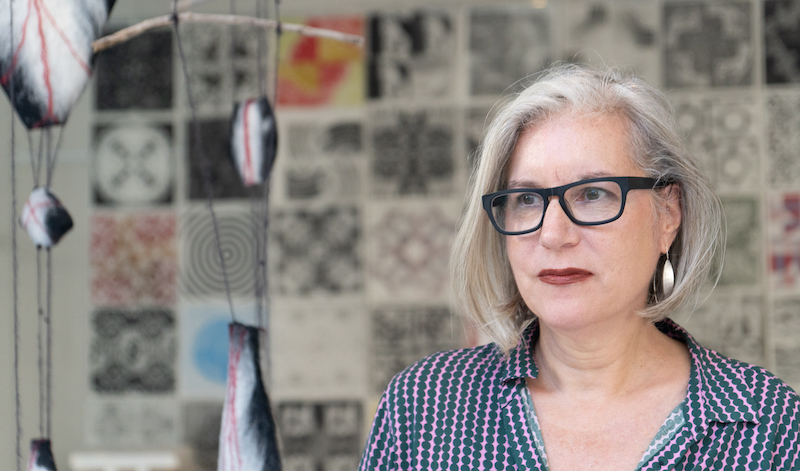
On October 27, Pattern, the Grid, and Other Systems opened in the Art and Design Gallery in FIT’s Pomerantz Center. Like almost all exhibitions in the campus gallery, Pattern features work by students, faculty, alumni, and guest artists. Among the contributors are internationally renowned sculptor and installation artist Abigail DeVille, Fine Arts ’09; Ruth Jeyaveeran, assistant professor of Textile/Surface Design; architect Karl Jensen; and Fine Arts faculty members Stephanie Pierce, Susan Daykin, and Mark Kurdziel.
The exhibition’s curator, Julia Jacquette, associate professor of Fine Arts, walked us through the exhibition, talked about the origins of the show, and discussed a few selections. The exhibition will be on view through December 3.
On creating the exhibition
“I’ve always thought about pattern and grids growing up in New York City, because basically we exist on a grid, and that was always satisfying to me—I’ve loved that you can find your way around New York so easily because of that. But then there are also all these exceptions, like where Broadway cuts diagonally through the city and there are all these exceptional little blocks that get made because of that. So I was thinking about the delight caused when a grid is interrupted or disobeyed as well.”
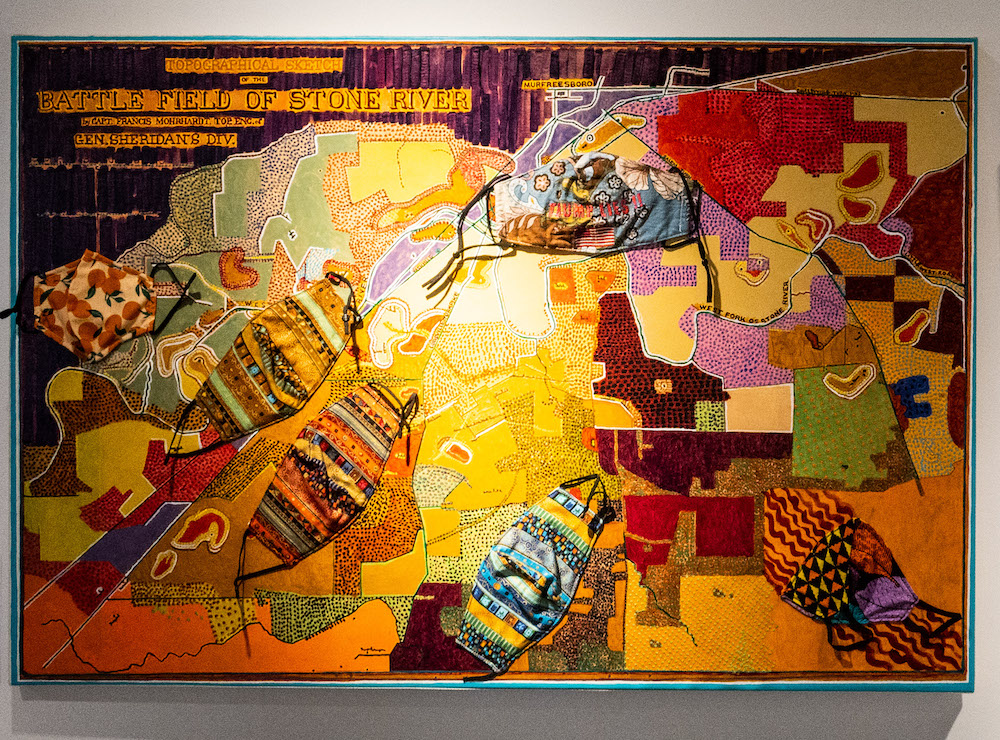
Joyce Kozloff, Battle of Stone River, 2023, acrylic, embroidery, collage, on canvas, 30.25 by 45 inches
“Joyce Kozloff is 80 years old and she is considered an important member of the Pattern and Decoration movement, which was one of the few purely American artistic movements. She’s continuing to work a lot to this day. This painting is from a series about Civil War battles, but she combines it with thinking about Covid: The face masks were made during the pandemic. I think they are two incredibly disruptive events—war and Covid—and of course they would go together, but it’s also very Joyce to then combine them with beautiful decorative arts.”
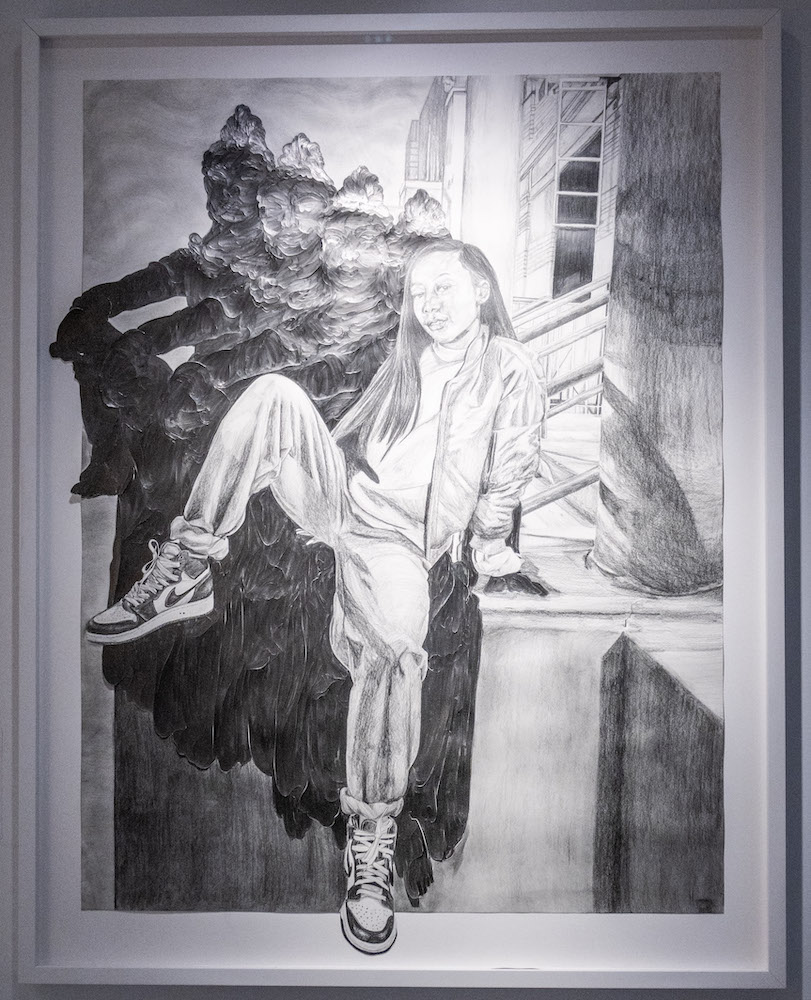
Oasa DuVerney, Fine Arts ’07, A Young Nzinga Echoing Bodhisattva Manjushri, 2023, graphite on hand-cut paper, 40 by 53 inches
“In this piece, there is this bodhisattva figure repeated and then her teenage daughter, I think, imitating the pose, which is especially delightful to me. I’m currently studying Buddhism and learning about how there’s this repetition of our lives, where at some point, Buddhism believes, I was your mother, and at another point, you were my mother, and every person in the world was the other person’s mother and vice versa. It is a mind-boggling thought, but also very profound and helpful, I find. So in this drawing we have this repetition and maybe she is going to be a bodhisattva or the bodhisattva is her.”
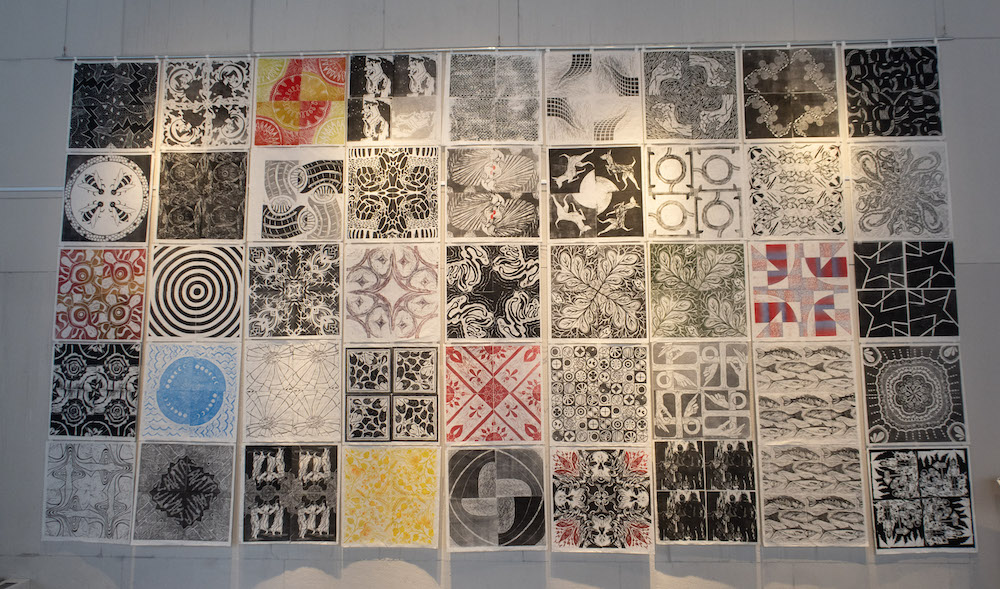
Students from Marie Lorenz’s Fine Arts Class, Collaborative Pattern Printmaking Project, 2023, relief prints on Kozo paper, 10 by 18 feet
“This is a collaborative piece by every single one of our 44 fifth-semester students. They each made a foot-square tile, which they printed on a 2-foot-square piece of paper. They were required to rotate that tile, so that tile had to work in a bunch of different directions. Then all the 2-foot-square prints got put together to create this big grid.”
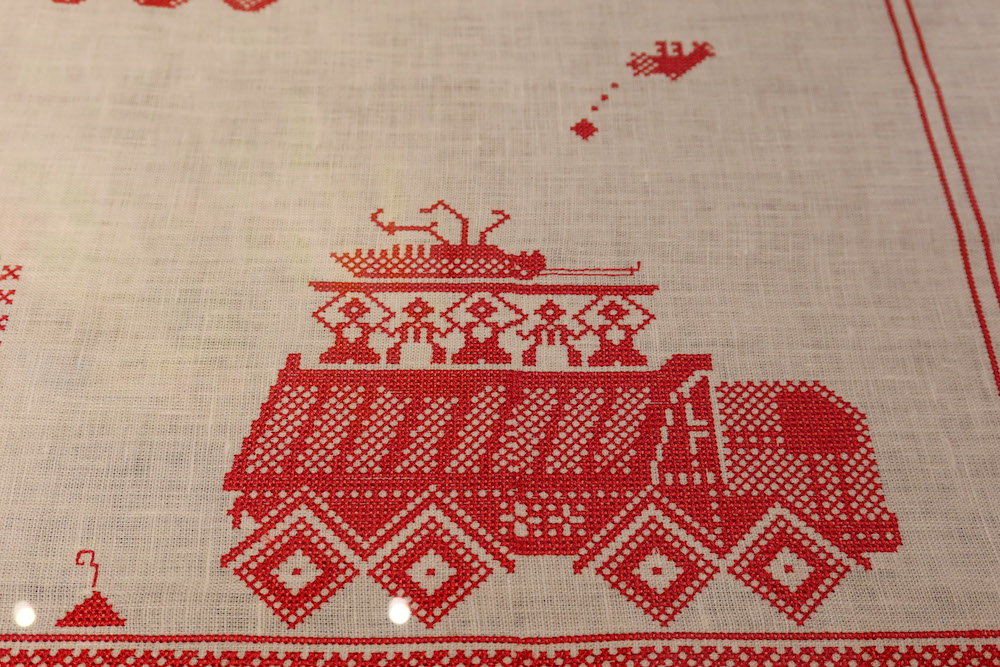
Rufina Bazlova, The Saga of Protests, 2020–2021, embroidery on aida cloth, 20 by 276 inches
“It’s like a table runner and it’s all scenes of protest in Belarus. [Editor’s note: The disputed 2020 reelection of Belarus president Aleksandr Lukashenko sparked massive protests. Western leaders have criticized him for his relentless repression of dissent.] The thing about Rufina’s work is it’s so much about this heartbreaking situation, there’s always humor in it too. So we see a cockroach—the dictator is often called ‘The Cockroach’—on its back. Here’s a bird pooping on them. People running. It’s such an activist piece. There’s a trio of women’s underpants—I think it’s referencing a trio of women activists. Her website explains a lot of the imagery.“
Josef Zutelgte, adjunct assistant professor of Fine Arts, Dolos, 2018, mixed media, 97 by 34 by 34 inches, and Babel Tower Diamond, 2022, aqua resin, paper, and pigment, 34 by 23 by 26 inches
“[Zutelgte’s sculpture looks] at natural structure in the world, and one sees the patterns in his work, the grids, repetition, as an analogy for human experience. There’s a sculpture, called Babel, named after the Tower of Babel and all that implies—miscommunication between people—but there also happens to be beauty in the piece and he’s made this tower that also has these piercings so you can see through it. So there’s also optimism in his work, even though he’s often describing frustrations as well.”


